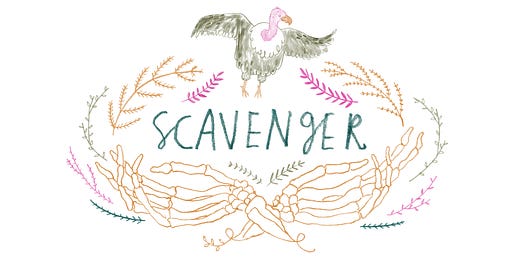A Whale of an Ice Cream Cake
How Carvel's enigmatic mascot stole hearts and celebrated holidays.

Commercials don’t stay on air forever, but these days you can find most of the classics on YouTube. Alongside my favorite Sears commercial for air conditioning and this Nickelodeon magazine time capsule, an extremely specific ice cream creation is finding new life.
In the commercial, Tom Carvel’s raspy voice warbles over a goofy music track. He’s advertising “a whale of a cake, for a whale of a dad.” Serving a big crowd? You can add a marbled-blue ice cream ocean to serve up to twenty people.
If this seems bewildering, here’s a translation: he’s talking about Fudgie the Whale, an ice cream cake Tom dreamed up and miraculously managed to spin as a Father’s Day treat.

Carvel’s story began in 1929, when Tom persuaded a woman named Agnes Stewart to lend him $15 to get his ice cream business off the ground. The business succeeded, and so did their relationship—Agnes eventually agreed to marry him.
A few years later, in 1934, Tom’s ice cream truck got a flat tire. Stuck in the parking lot of a pottery studio in Hartsdale, New York, Tom raced to sell his ice cream before it all melted away. Surprisingly, people seemed to enjoy the accidental soft serve. He later bought the pottery shop and turned it into the first of what would become many locations across the east coast (plus one in Los Angeles).
Although Carvel sells sundaes and milkshakes, it’s their ice cream cakes that truly made them famous. I grew up celebrating birthdays with Carvel’s classic round ice cream cakes, which feature chocolate and vanilla ice cream separated by a soft layer of chocolate cookie crumbs, all covered in a whipped cream icing that turns your mouth bright blue.
But it’s the company’s character-shaped ice cream cakes that truly blur the line between Carvel (the company) and Tom Carvel, whose specific imagination created them. Fudgie the Whale was Tom’s second, and arguably most iconic, foray into character cakes. In 1977, a teenager named Kathy Dumas worked alongside Tom in the franchise’s Yonkers, New York, location. Tom was determined to launch a Father’s Day cake in the shape of a fish, and he roped Dumas into fulfilling his idiosyncratic vision.
Naysayers were repulsed by the idea of ice cream that evoked seafood, but Dumas diligently tested different options. The pair decided that a whale’s stocky, rectangular body served as a good base — but its tail presented structural challenges. Eventually, Dumas realized that she could glue the whole thing together with a heap of thick, fudge-like icing, and from there it was just a matter of decorating the beast with nuts and a "Mona Lisa smile."
On June 1, just in time for Father’s Day, Fudgie became a reality. That iconic commercial wasn’t an agency creation; it was shot in-house, an unfiltered glimpse of Tom’s pride at his creation. Over the past four decades, Fudgie has been featured in The Simpsons (Homer’s description: “To Marge, a whale of a wife!”), Archer and The Office (Andy requests a Fudgie the Whale birthday cake from the party planning committee). Today, Carvel sells more than 50,000 Fudgies every year.

As for Carvel’s first foray into character cakes — it deserves a paragraph of its own. In 1972, the company began making “Cookie Puss” cakes. Cookie Puss, or C.P., is an alien from planet Birthday who roams the skies in a flying saucer. But within Carvel, people joke that the cake was designed to look like the company’s founder, Tom himself. I am not making any of this up.

Something else
I’m selective about which true crime podcasts I listen to, and recently I’ve been mesmerized by CBC’s third season of Uncover. In it, journalist Justin Ling tells the ongoing story of Toronto’s gay community, and how the city’s police force failed to protect it from a serial killer.
The podcast is good for several reasons. First, Ling focuses most of his attention on honoring and remembering the victims — not analyzing their killer. His interviews also unearth contradictions and shortcomings in the police investigation, adding to the public’s knowledge of what happened and making connections that might otherwise go unnoticed. Finally, Ling weaves a thorough history of Toronto’s gay community, contextualizing the horror of the murders within a larger story of discrimination and the activists who fought against it, all through interviews with key players.
You can listen here, or wherever you subscribe to podcasts.


